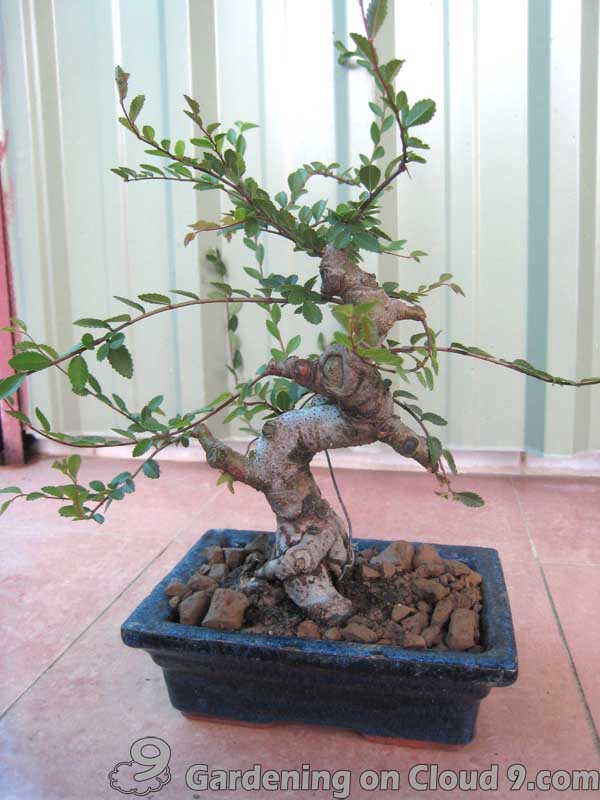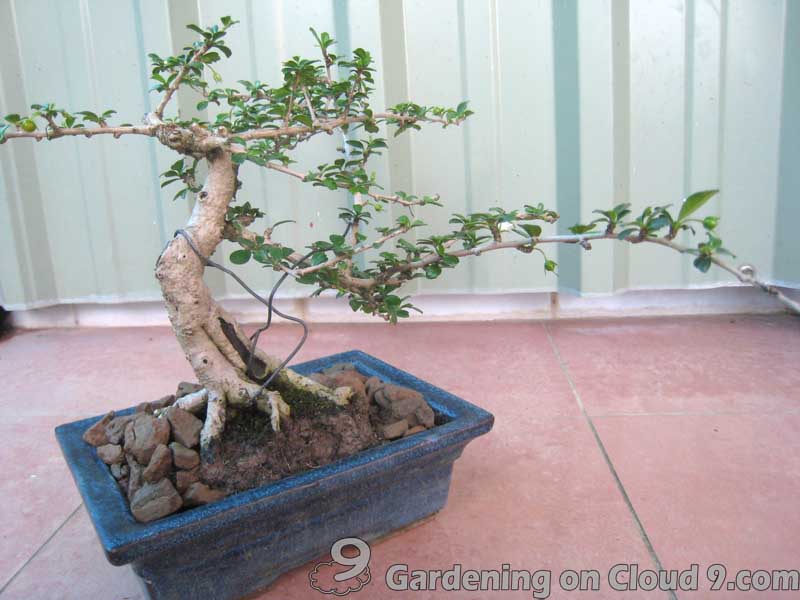Wiring Deciduous Trees
Deciduous trees can be wired anytime through the growing season. With leaves, it is a bit harder to study the bonsai tree structure and wire the branches at this time. Yet, nevertheless, I prefer to wire my bonsai trees at this time because branches wired in its growing season, particularly new shoots, will heal very quickly. In fact, for fast growing species, we should keep checking every week to make sure the wire hasn’t yet started to dig in.
Many bonsai gardeners like to wire their bonsai trees in the autumn when the branches are bare. Without any leaf on the branches, one can have a complete view of the bonsai tree and wire the branches easily. The branches should heal all cracks, but the most severe, before the tree goes completely dormant for the winter.
Another favorite time for wring deciduous trees is at the midsummer after defoliating our bonsai trees. Again, with the branches bare, the view is clear and wiring is easy. The branches of our bonsai trees should take to their new positions by early winter.
Wiring Coniferous Trees
Since coniferous trees will continue to heal over winter, we can wire our coniferous bonsai trees at anytime from spring till early winter. As it often takes longer for the branches of coniferous bonsai trees to be trained, the branches may often be wired throughout the winter. If temperature drops below -10°C, frost protection is needed.
Spring is a good season to wire our coniferous bonsai trees since the branches will set into their new positions relatively quickly, and cracks can heal in a faster pace as well. Yet, due to the fast growing rate, if any wire is still kept on our coniferous bonsai tree by midsummer, we need to keep checking the wiring regularly to ensure the wires haven’t yet dug into the branches. Some species, such as Pines, may swell suddenly around this time.
The best time to wire our coniferous bonsai trees is from midsummer to early autumn. In this time of the year, new growth will need wiring. Cracks will heal faster than most other times of the year as well. In addition, many species such as Pines, will have made most of their annual growth in branch thickness by midsummer, wiring after this time will allow the wires to stay on the tree till the following year without digging in and scarring the branches.
Wiring Tropical Trees
Since tropical species are protected from frost and have no dormant period, they can be wired at anytime of the year. Yet, due to the vigorous growth of tropical species, the wire can cut in fast, hence, must be checked very often.

























